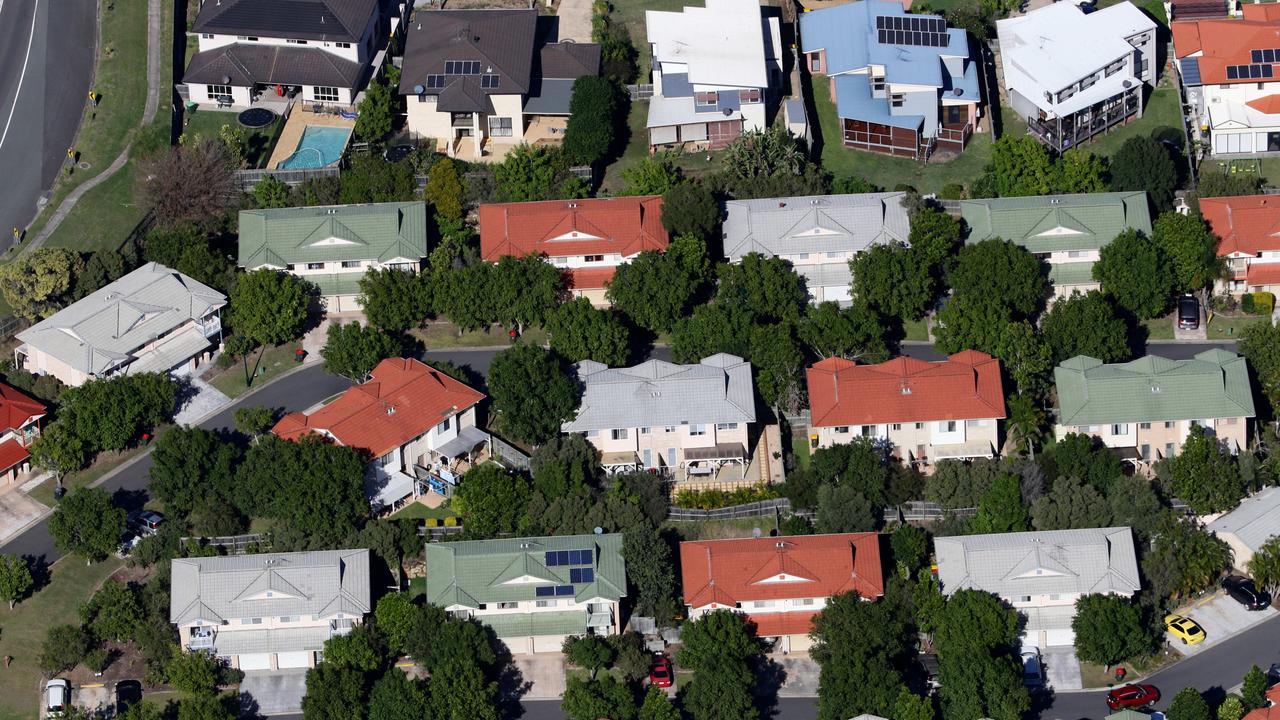Brisbane house prices close in on $1m as Qld soars
Brisbane’s median house price has surged by nearly $500k in just five years, cementing it as the second most expensive capital city to buy a home in. But regional Queensland prices are also soaring.
Brisbane median house prices have hit a fresh record to now sit just $70,000 shy of $1 million – cementing it in as the second most expensive capital to buy a home in, with regional Queensland also roaring.
The latest PropTrack Home Price Index, released on Saturday, saw Brisbane firm up its dominance over Melbourne to now muscle in on Canberra – driven by its massive 68 per cent rise in prices in just four years off the pandemic population surge.
MORE: 100 granny flats a week: Families turn to ‘instant’ housing solution
Queensland now the hottest target in Australia for overseas buyers
‘Almost disappeared’: Crisis point as $400/week rentals collapse
PropTrack found overall home prices – which includes houses and units in the River City – have gone from $543,000 just four years ago to now equal Canberra ($834,000) despite BudgetDirect figures showing residents in the latter having 6.24 per cent greater purchasing power.
Brisbane dwellings have the third fastest pace of annual growth across all capitals and regions (13.69 per cent) behind Perth’s 20.58 per cent and Adelaide’s 14.49 – with prices also 18.15 per cent higher than Queensland’s December 2022 low.
House prices here are rising by 13.34 per cent a year and unit prices jumping even faster at 15.74 per cent – an astounding pace considering the rise between May 2016 and May 2020 was just 6 per cent, and the entire decade before the pandemic saw growth of just 17 per cent.
PropTrack Senior Economist Eleanor Creagh said “it is only a matter of time before Brisbane overtakes Canberra” given it continues to record strong growth, with the median house price now just $31,000 apart in the two capitals.
She expected Brisbane to continue to “feel strong price increases” given total stock on market has fallen since last year, while Canberra is stalling with 30 per cent more homes for sale compared to last year with price growth of just 1.23 per cent annually.
“Brisbane is much more of a seller’s market at the moment,” Ms Creagh said.
“It would be reasonable to expect the pace of growth we’re seeing now to flow throughout the quieter winter period.”

Brisbane’s $930,000 median price for houses is $25,000 shy of the capital cities median, but the city still has the perception of good value given it’s 34 per cent cheaper than Sydney’s $1.413m median.
Regional Queensland – which had the greater pandemic price increase of all markets in Australia jumping 69.4 per cent since March 2020 – saw a minuscule 0.05 per cent fall in May – but prices are still 9.95 per cent higher than May 2023. The Gold Coast median home price is up 11.48 per cent in the past year to $948,000, the Sunshine Coast has grown 7.9 per cent to $994,000, Townsville is rising faster than SEQ at 17.63 per cent to $441,000 while Cairns increased 8.85 per cent to $535,000.

Ms Creagh said both Brisbane and regional Queensland would “reach a point where that deterioration in affordability does start to slow price growth”.
But. she said, ”even if the pace of growth slows, prices are still going to be moving higher”.
“You’ve got a way to go yet.”
The median price of a unit in Brisbane is now $632,000, while regional Queensland is higher at $639,000 – though prices in the capital are outpacing the rest of the state now (15.74 per cent vs. 9.49 per cent).
RMIT senior property, construction and project management lecturer Dr Trivess Moore said the increasing cost of housing was an ongoing concern across Australia.
“If these trends continue it will further entrench housing affordability and access issues for households, as well as put more pressure on the construction sector to find solutions.”

Ms Creagh said Queensland had reached the point where there were a multitude of factors now driving prices.
“Other demand drivers are in play like strong population growth, tight rental markets, investor activity, tight supply, home equity gains, those things are offsetting that interest rate environment.”
She said buyers were trying even harder to overcome affordability challenges to get into the market before more price rises.
“The strength and activity that we’re seeing at the moment points to a relatively strong selling season incoming (over Winter).”
The next RBA board monetary policy meeting is scheduled for just over a fortnight’s time on June 18.




